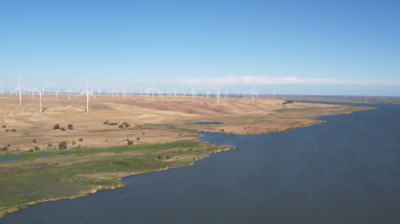CRC Spotlight Series: Greening the City of Watsonville
This is one in a series of profiles of the 12 winners of the California Resilience Challenge, a first-of-its-kind statewide initiative of the Bay Area Council and a diverse array of partners. The Challenge recently awarded $2 million in planning grants for a variety of innovative projects in communities across the state to address the growing impacts of climate change, including drought, floods, wildfires, and sea-level rise.
The City of Watsonville, located along the Pajaro River which flows 30 miles before emptying into Monterey Bay, is prone to floods that are exacerbated by climate change. Other extreme weather patterns are have become increasingly common in the region, including extreme heat and drought. The City of Watsonville’s agricultural economy and diverse population make it particularly sensitive to the impacts of climate change.
With a grant from the California Resilience Challenge, Watsonville is developing a Green Infrastructure (GI) implementation plan provide a pathway for the City to achieve a myriad of adaptation goals by using vegetation, soils, and natural process to manage water and create a more resilient environment. GI can range in scale from site design approaches such as raingardens and green roofs, to regional planning approaches such as land conservation or wide-scale tree planting.
The GI plan will serve as a robust update of the 2006 Urban Greening Program and a supplement to the 2012 Climate Action Plan. While both programs introduced important sustainability practices, their efforts primarily focused on energy conservation and greenhouse gas reduction. Watsonville’s GI implementation plan recognizes the need for more direction action and therefore focuses its efforts on increased resiliency and climate adaptation.
Specifically, the plan will develop and deploy a “site selection” methodology that identifies GI priority areas based on prior planning efforts, community input, and supplemental climate modeling techniques. The plan will also identify feasible conceptual designs for priority areas and provide an implementation roadmap with tangible funding opportunities.
“Recognizing the importance of community support and ownership in moving projects forward, the City of Watsonville will seek the engagement of residents and businesses throughout the planning process to ensure the goals and outcomes of the plan are transparent and beneficial, especially to climate sensitive or otherwise disadvantaged groups,” explained Jackie McCloud, the Senior Utilities Engineer for the City of Watsonville.
Overall, funds through the California Resilience Challenge will allow the City to identify the types of GI projects that will benefit the community through beautification, carbon sequestration, habitat connectivity, improved air quality, and water quality.
To learn more about the California Resilience Challenge, please contact Policy Associate Anna Sciaruto.
Special thanks to California Resilience Challenge funders PG&E, JPMorgan Chase & Co., Valley Water, Metropolitan Water District, Southern California Edison, Resources Legacy Fund, Alaska Airlines, SFPUC, SD Bechtel Jr. Foundation, and Pillsbury; and special thanks to Advisory Committee members AECOM, Pillsbury, Climate Resolve, Environmental Defense Fund, Ceres, and the Governor’s Office of Planning and Research.





